Visit Library for MBP Pro eBooks |
My apologies for going down-periscope again recently, as I found an unintended restriction in my recently released synthesizer plugin for the Korg Minilogue XD, and as is often the case, when I’m working on development projects, they can completely consume me. Finally last week I released an update, and have my life back, so I figured I’d share a part of it with you.
In October, I went for a few hour’s walk in my local park, the Jindai Botanical Park and Gardens, and I came home with a handful, literally five images, that I felt happy with, so I will share these today with a little information on each image. The first shot is of a dahlia, as I often shoot them at this time of year. I enjoy the details in these large flowers, and as usual, I converted this shot to black and white and darkened the background in Capture One Pro. The new magic brush now makes it very easy to mask out the background in cases like this, as it automatically finds the edge of the petals as you draw over the background.
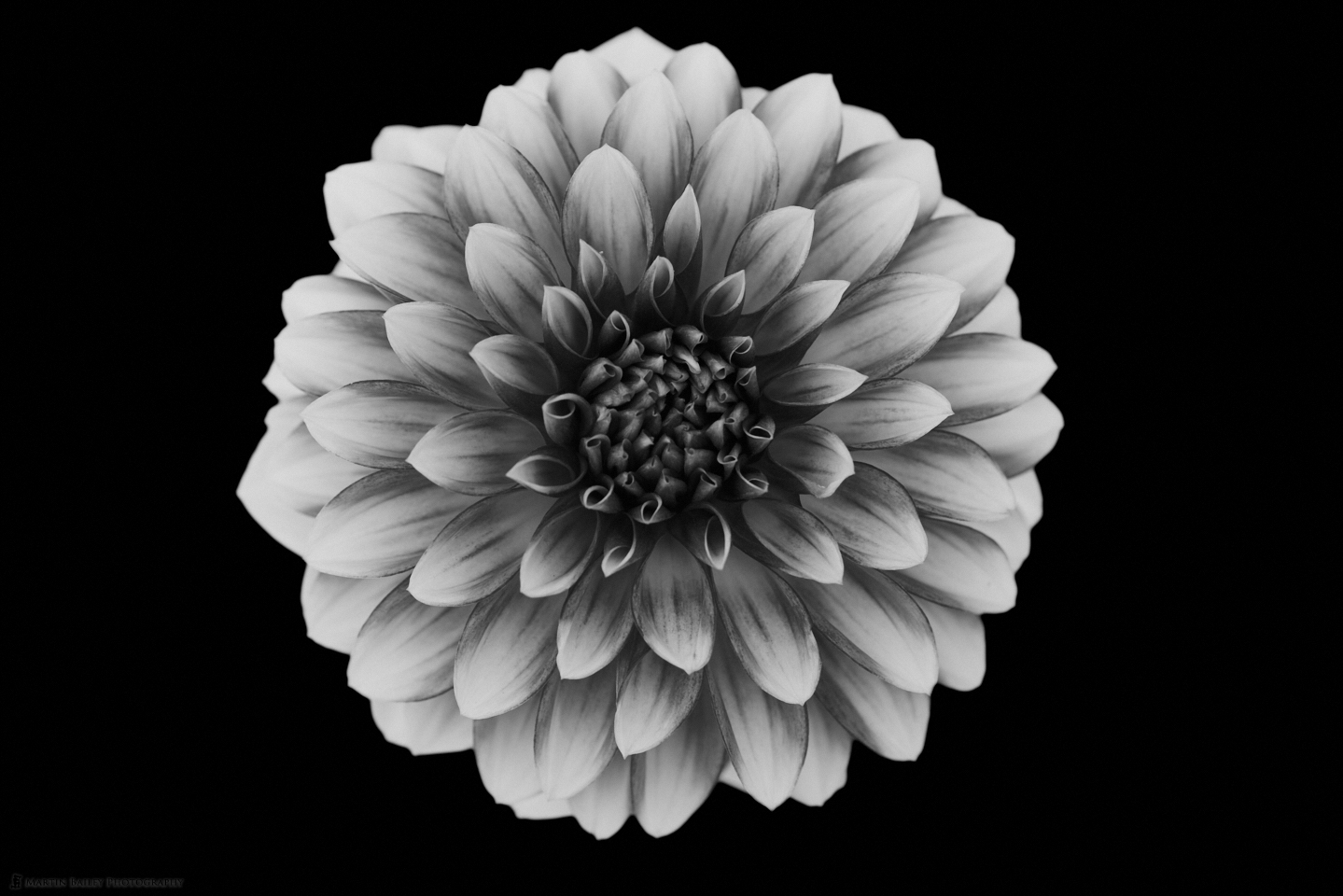
I shot this with my 100mm Canon RF macro lens, which I really like. The stem of the flower was hidden by its own head, as I was looking down on this, so I didn’t actually darken the stem away. It simply wasn’t visible. I tweaked the color channels a little and added a subtle tone curve to increase the contrast.
The next couple of images are of the same subject, and as you’ll see, somewhat abstract. This is the canopy of the trees reflected in the water of a stream that runs through the park. The stream is dark and heavily shaded, so to get this I used ISO 6400, and that was partly necessary because I needed a fast shutter speed of 1/500 of a second to freeze the surface of the water in that mosaic tile look. I like green as a color so I enjoy all of the different painting-by-number type patches that make up this image.
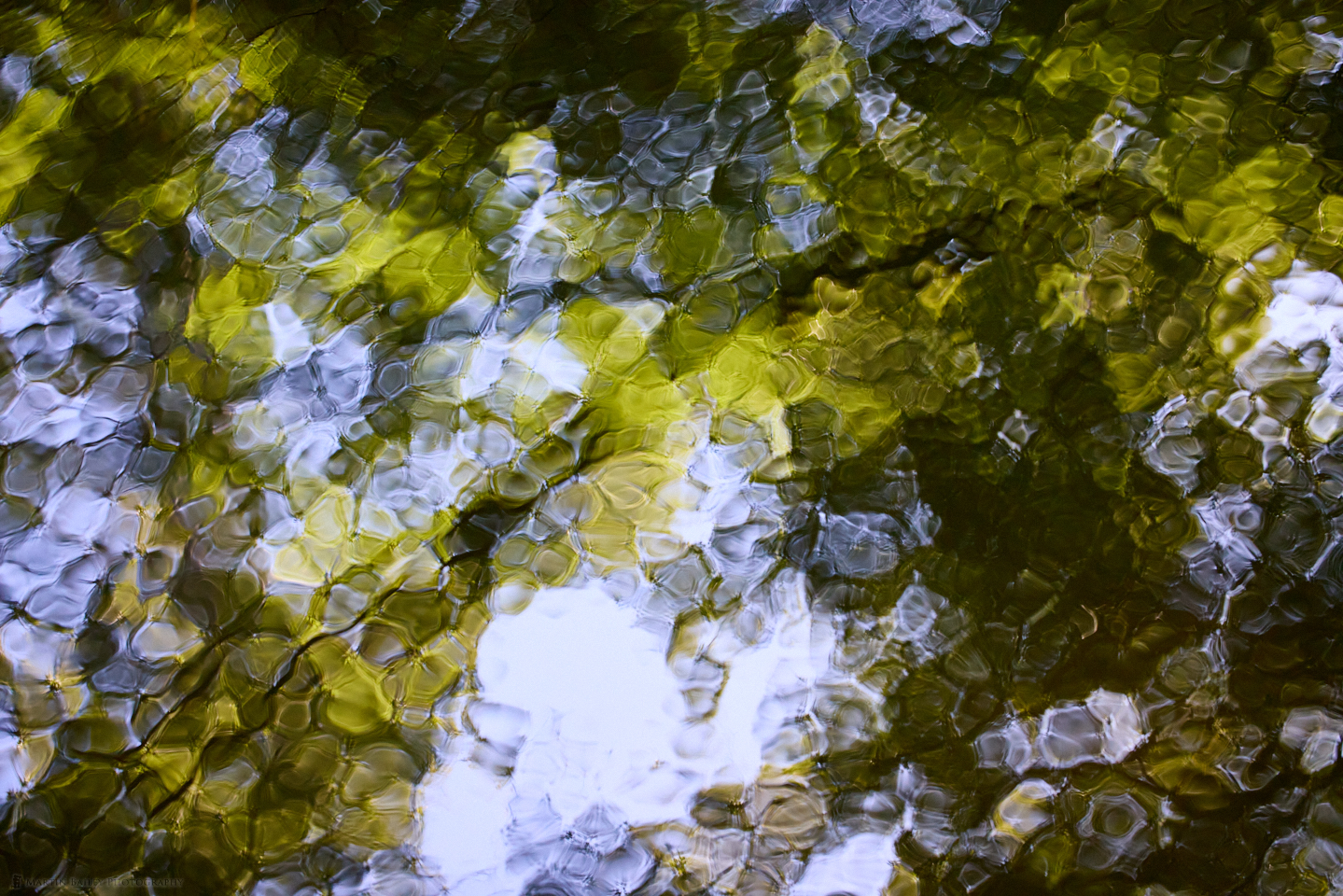
The next image is similar but has greater color contrast with the blue sky. I prefer the green and white image to the green and blue image, but I still like the mosaic pattern in the second image, so I figured I’d leave it in my selection. Besides, the ripples in the blues on the left side, and top left corner, are quite appealing to me as well.
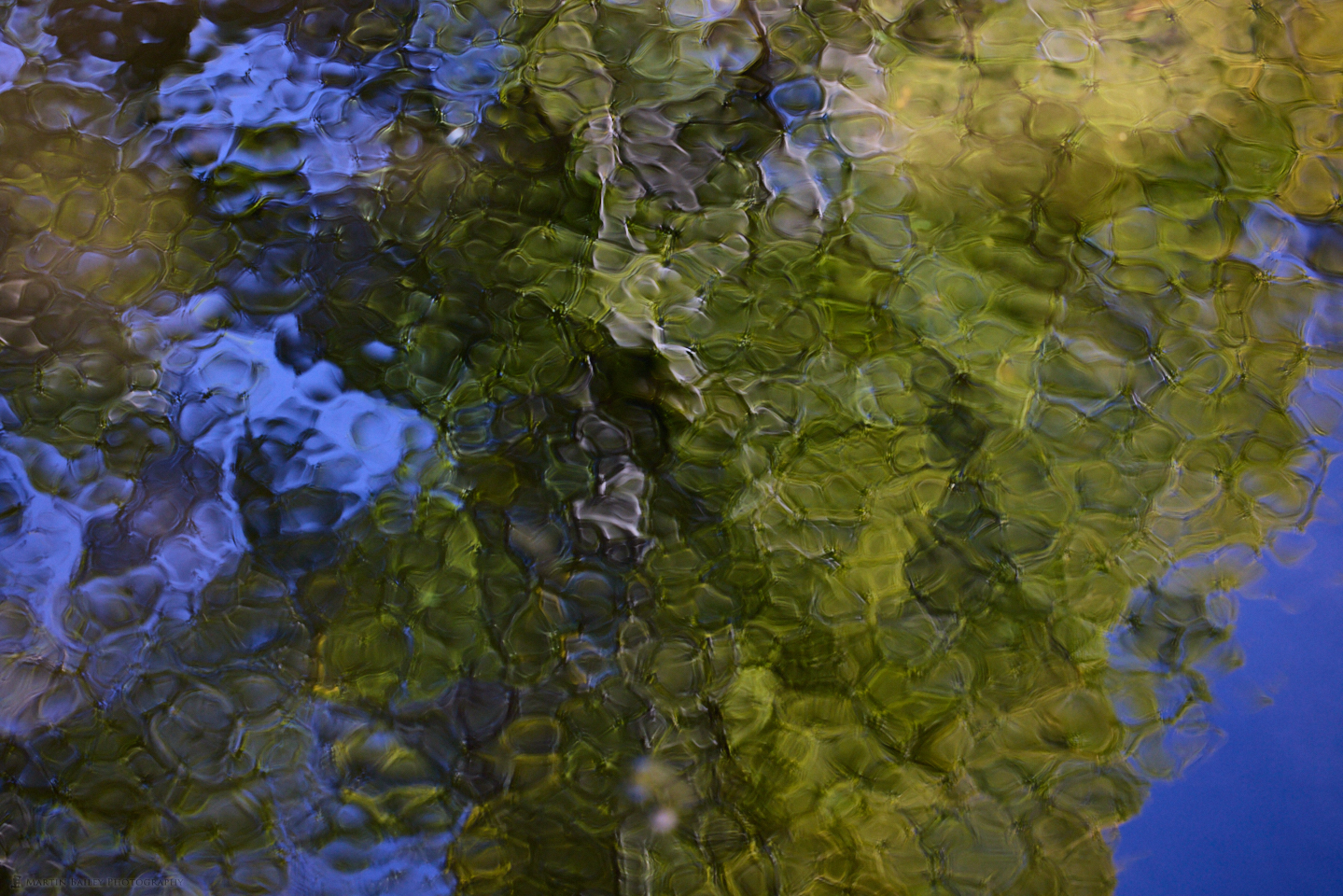
I’m not overly in love with this next photograph of a dandelion seed ball but I wanted to include it to talk about how the image came about. As this was primarily a walk in the park with my wife, I decided not to take a tripod, so I shot everything hand-held. For this image, I actually moved forward while shooting a burst of around 20 frames, which I then took into HeliconFocus to create a focus stack, and this is the result.
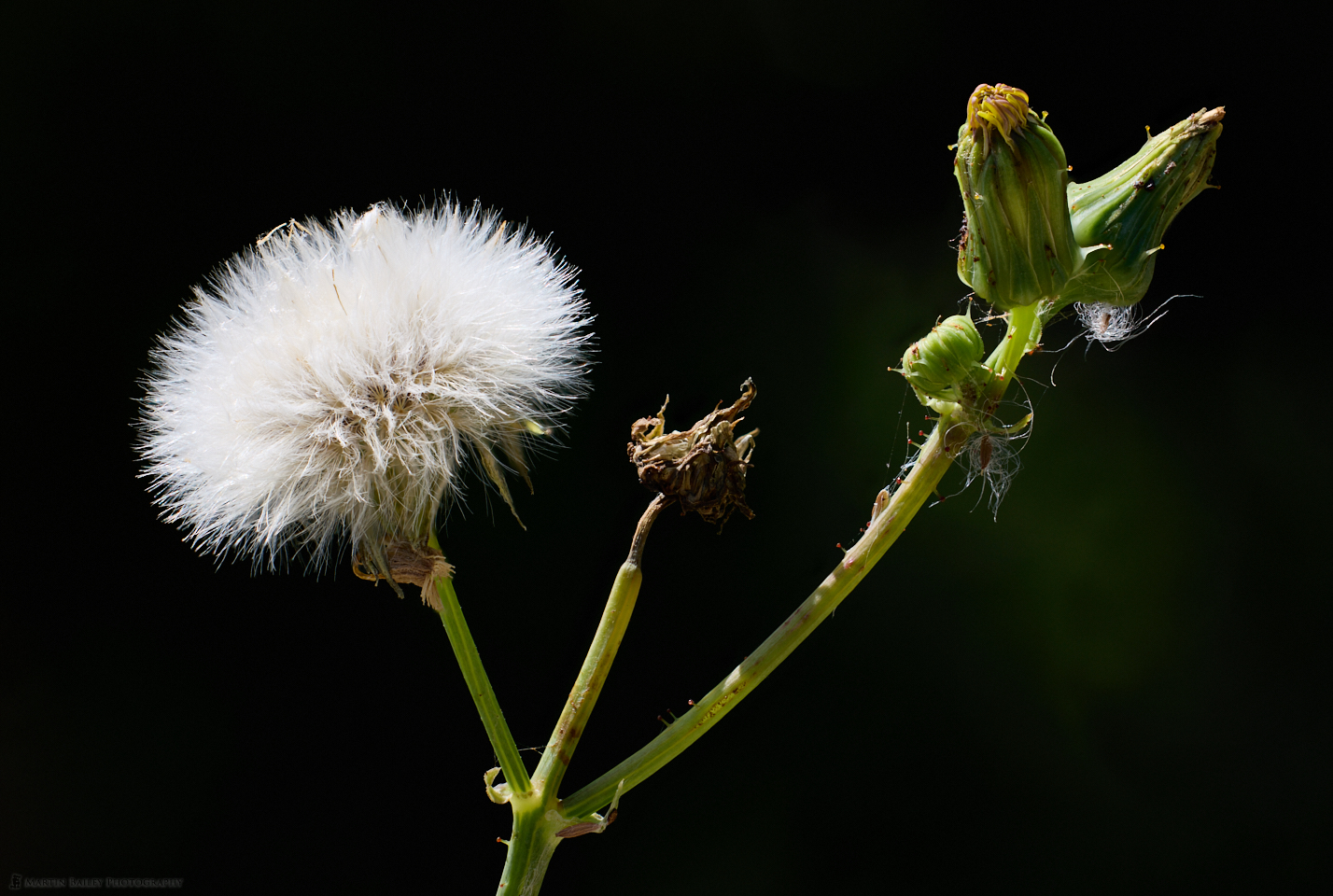
As you can see, we have the entire head of the seed ball and the flower buds all in focus, thanks to the focus stack. There is a very dark green in a part of the background, but the rest is black. This is the natural background of the image. I didn’t darken it down. It was just a shady area, so the contrast was enough to throw it into darkness, and that suits me fine.
The fifth image was a dragonfly, perched on top of a dried lotus flower seed pod. For this shot, I stopped down to ƒ/10 to get a little more of the wings in focus, but I didn’t go any further as I wanted to maintain the smooth background. Again, the greens are appealing to me, so I was happy when a group of ladies moved out of the frame.
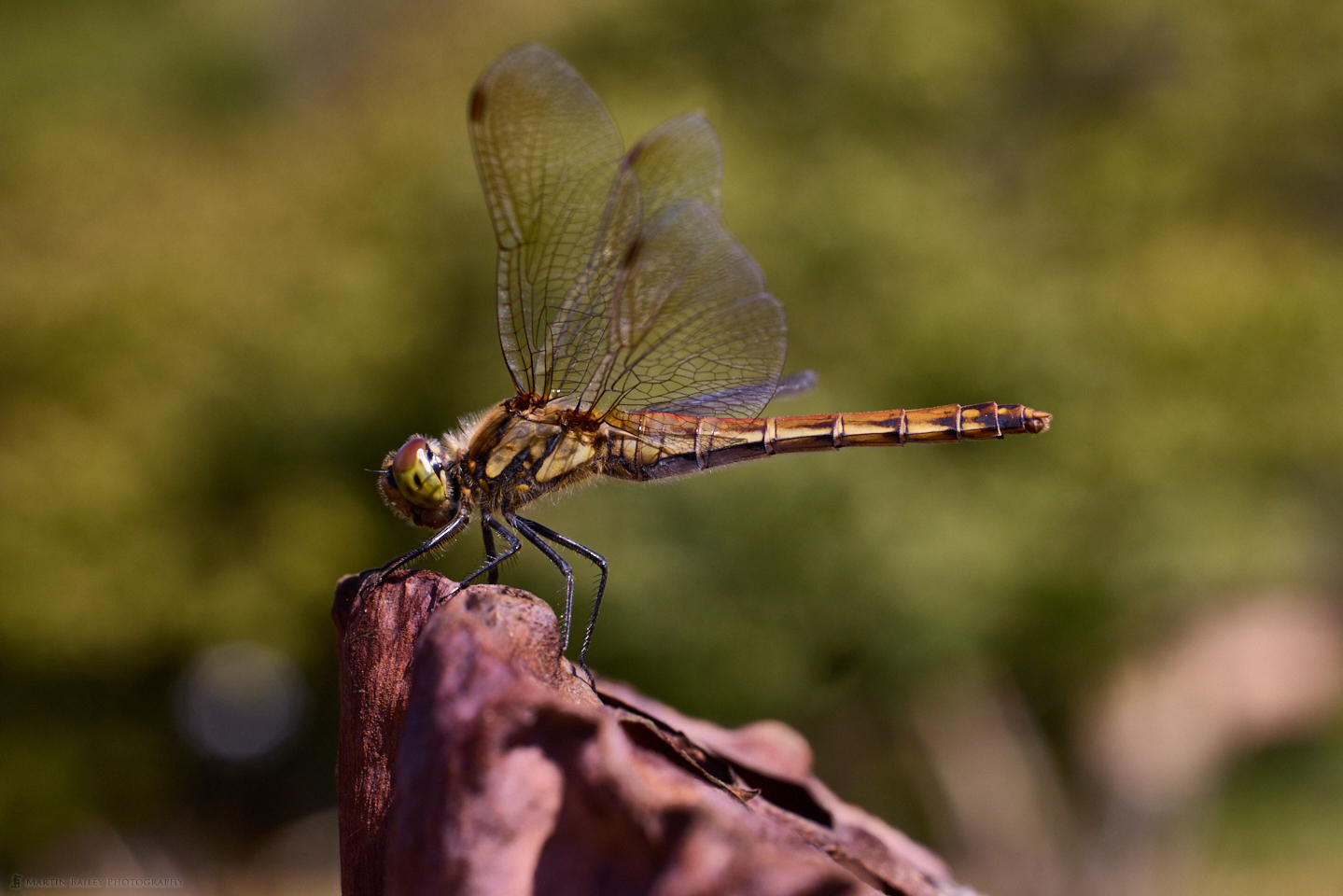
A man probably ten years or so older than me saw me photographing the dragonfly and suggested that I recompose to get the blue sky in. I smiled and continued as I was, as blue sky rarely has any appeal to me. My wife, being the straight-as-a-die gal that she is, told the man that I didn’t like blue skies, and he swiftly vacated the area. We agreed later that we don’t always have to tell people about my aversion to blue skies. People rarely like to be told that I think their suggestion sucks. You’ve gotta love my wife for sticking up for me though. Bless her little cotton socks, as my Mum would have said.
Since preparing for this Podcast over the last few days, I actually visited the park again this morning, for one of our regular walks, and got a shot of the autumn color that is not great this year, due to our hot summer and strangely warm autumn, but I like the depth and warm colors, so I’ll this one last image before we finish.
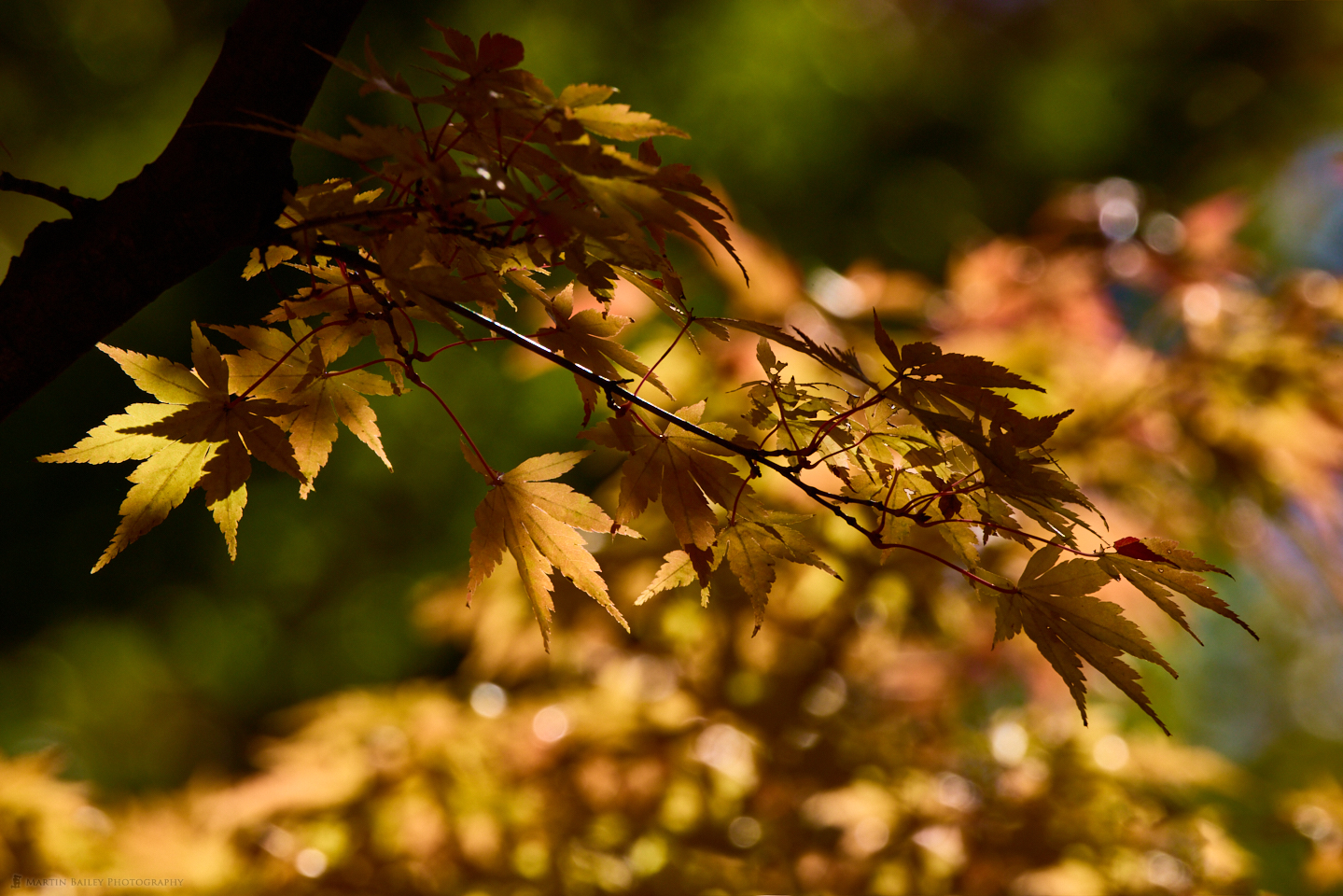
I shot this because I like how we can see the shadow of the back leaf on the foreground leaf in the top left corner. I’m generally pretty careful about my backgrounds, and lined this up so that there was lots of color behind the foreground leaves. I used my 100-500mm lens with an Extender fitted to get a focal length of just over 700mm, to isolate this small area of the leaves.
Synology NAS Backup Update
Anyway, that’s my five shots plus one from my walks. Before we wrap up, I wanted to give you an update on the status of my Synology NAS backup saga, that I’ve been sharing over the year. I’d been having problems with my Internet provider because they limit upload volume to 30GB per day, but provide no tools or insight into how much we are updating, until they send a snotty letter telling me that 30GB is an unfathomable amount of data to upload in one day.
Anyway, a few months ago I got a Starlink, and continued the upload of my images and video from this year, as that is the only data I didn’t have backed up in the cloud, and at 2.67TB, it completed uploading last week. I was averaging around 30GB per day, sometimes a little more, so I don’t know if Starlink is choking the speed to the Amazon Glacier servers, as my Internet speeds over Starlink are faster than that, but if they are, I’m fine with that. I would much rather be limited automatically than be given no tools to avoid being shouted out.
It may well be the Glacier server that’s the bottleneck, and that’s fine too. The point is, it’s finished backing up, and although it was time-consuming, it was a stress-free process, so all is good. I have unplugged my old provider’s router and will be calling to cancel the Internet part of my account next month, which is the month in the year that I can make changes without penalty.
I’ve also now started to upload another large batch of files so that I can eventually cancel my iDrive account, as that system simply was not working for me with the amount of data I needed to back up. Every time I had to cancel my backup, say to reboot my NAS, it would start from scratch, and just checking each file in the backup was as time-consuming as uploading it in the first place. A far cry from waiting three seconds for the Amazon Glacier backup to tell me exactly how much data was already backed up after restarting the process.
All in all, it’s still a big thumbs up for Amazon Glacier and Starlink, and it finally feels like I have my cloud backup strategy updated the 21st century.


0 Comments